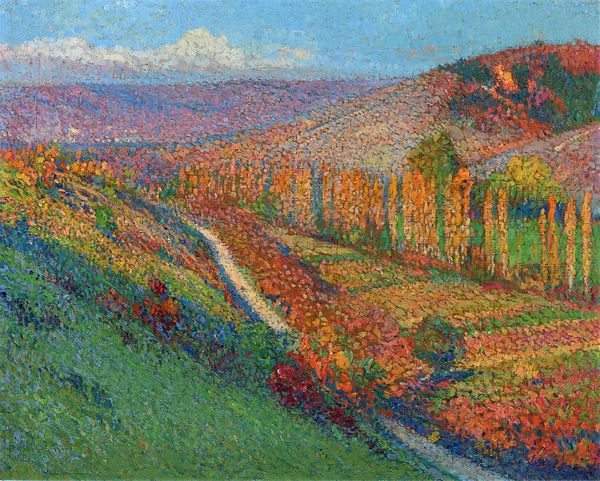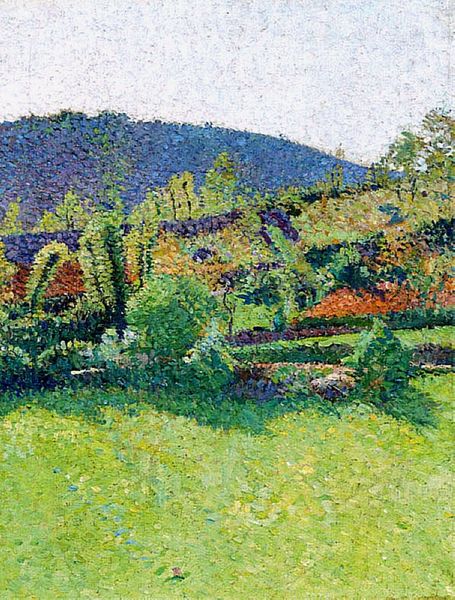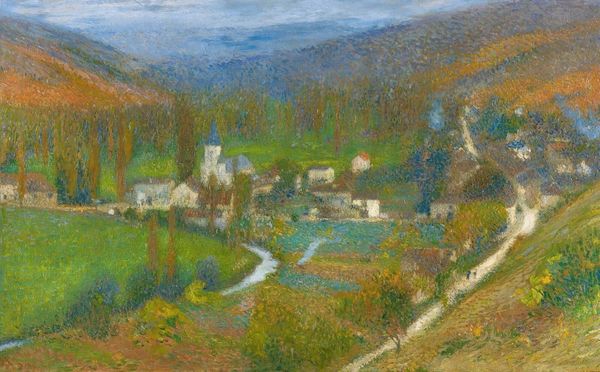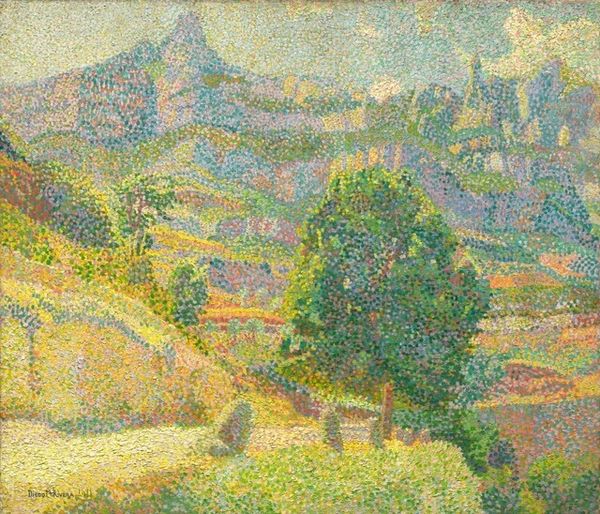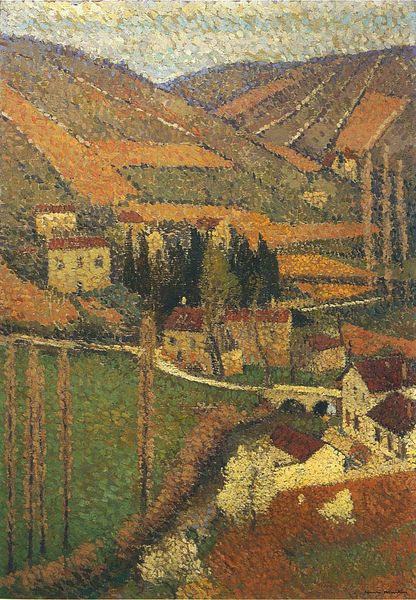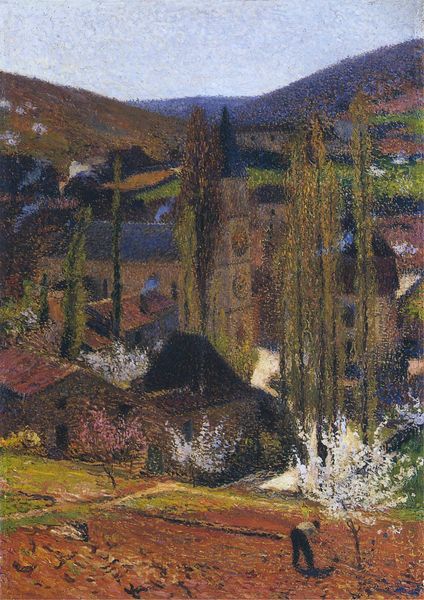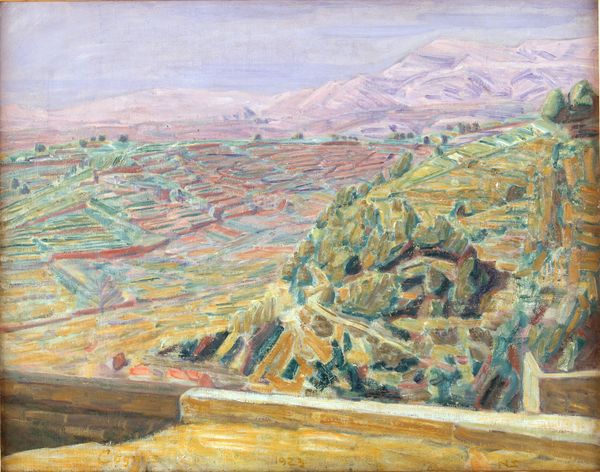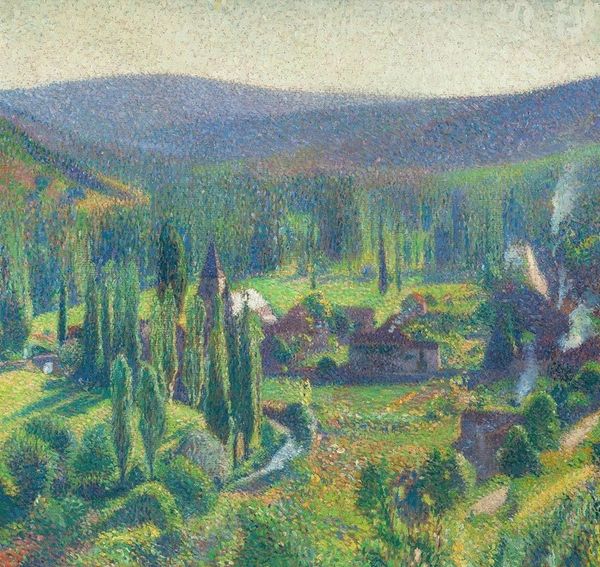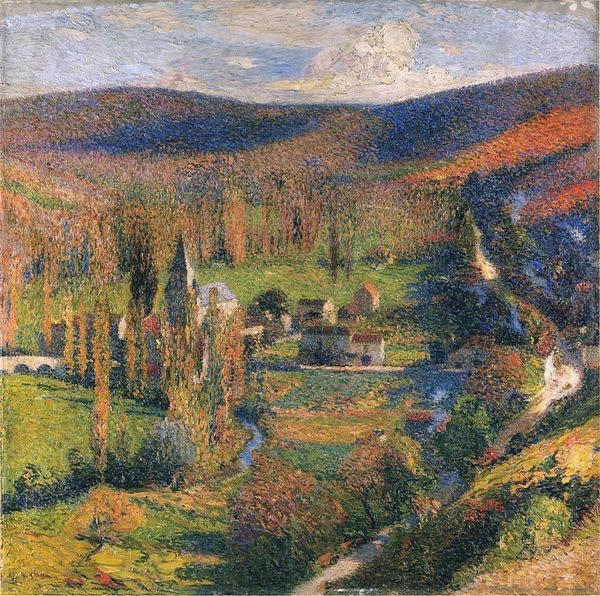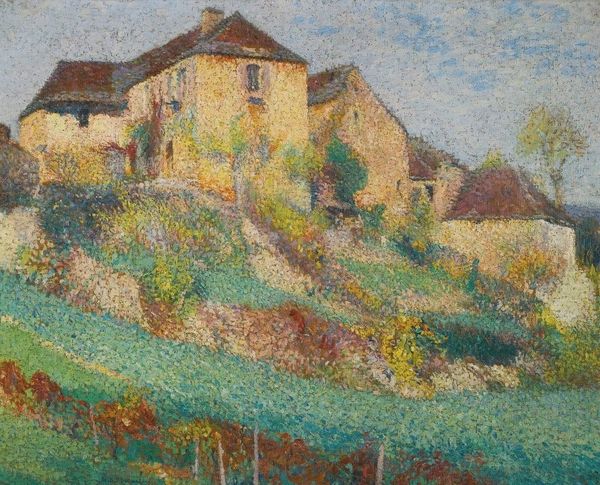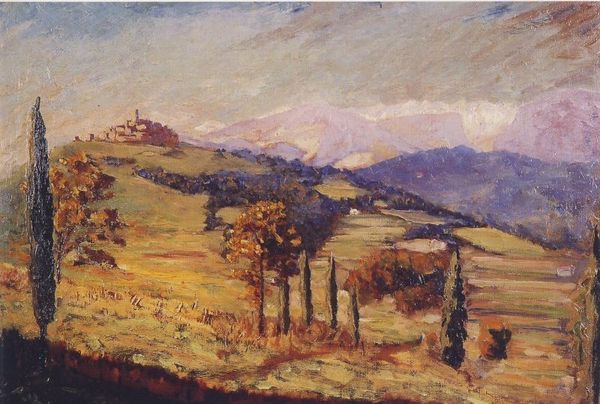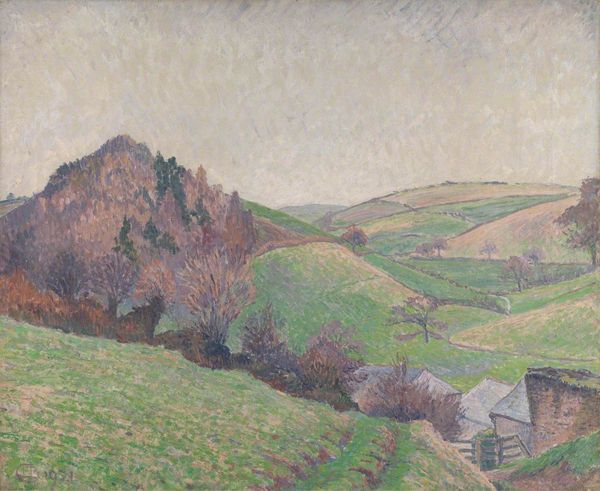
divisionism, painting, plein-air, oil-paint
#
divisionism
#
painting
#
impressionism
#
plein-air
#
oil-paint
#
landscape
#
impressionist landscape
#
nature
#
oil painting
#
post-impressionism
#
natural environment
Copyright: Public domain
Curator: Oh, wow. This canvas feels so warm and inviting. It’s like autumn itself is shimmering before my eyes. All those little dots of color—they make the whole scene feel so alive. Editor: Exactly! We’re looking at "Valley in Labastide du Vert," a landscape painting by Henri Martin, though the specific date seems unrecorded. What strikes me immediately is its embodiment of Divisionism—a technique Martin adopted to capture the vibrancy of light through separated colors. It reminds me a bit of Seurat. Curator: Divisionism… right, all those tiny, individual brushstrokes blending in the viewer's eye! I can almost feel the sunlight on my skin looking at this piece. There’s this deep sense of peace too, as if I could just step into the valley and wander around. The road looks almost like an invitation. Editor: It's interesting you mention peace because landscapes, especially around the turn of the century, became powerful symbols of national identity. Representing the land was also about possessing it. Though rendered with these delicate strokes, one might reflect on whose labor tilled these fields, whose access was limited. The “peace” isn’t universally felt, depending on one’s positionality. Curator: That’s… sobering, definitely something I hadn’t considered at first glance. But there’s still such a sense of personal connection to nature here. I mean, look at those colors. Golden yellows blending into oranges and browns—it’s pure emotional expression for me, nature experienced directly. Editor: Yes, and Martin wasn't simply copying nature. He’s engaging with the Impressionist and Post-Impressionist dialogue, interpreting the landscape through his own stylistic lens and, of course, influenced by the colonial, capitalist forces of the era that necessarily shaped access to leisure and nature, depending on who you were, and were not. Curator: It's so true how historical contexts reshape our viewing, even of something as seemingly straightforward as a landscape painting. It shows that looking isn't just about seeing. Editor: Precisely. Hopefully this exchange reminds visitors that any artwork is always a meeting place for aesthetics, politics, and personal experiences.
Comments
No comments
Be the first to comment and join the conversation on the ultimate creative platform.
